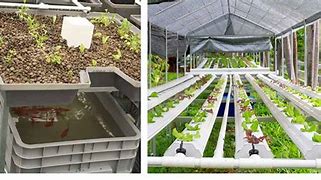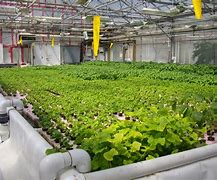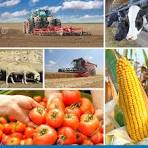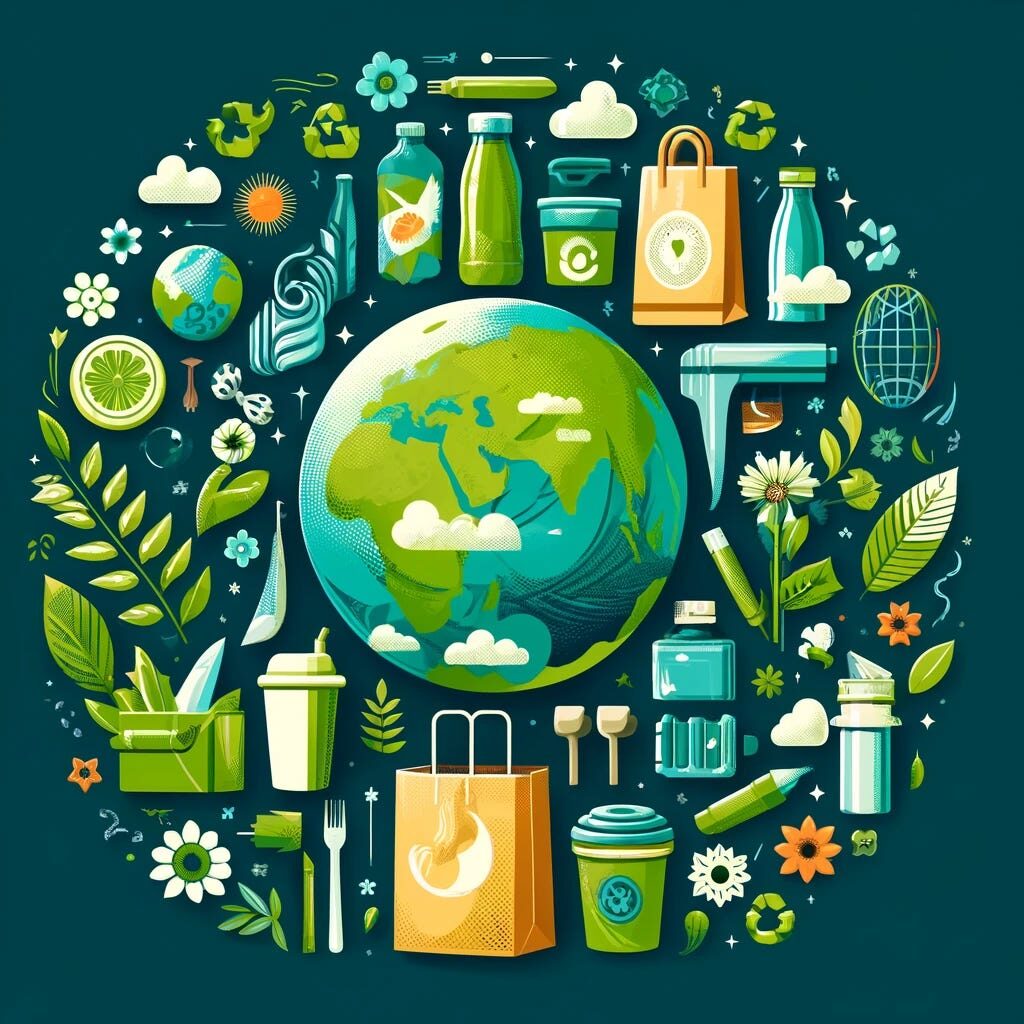Hydroponics and Aquaponics: Soil-less Farming Techniques for Sustainable Food Production
In an era where food security and environmental sustainability are at the forefront of global concerns, innovative farming techniques like hydroponics and aquaponics are gaining traction. These soil-less methods promise to revolutionize food production by maximizing space, conserving water, and minimizing environmental impact. If you’ve ever wondered how these systems work and what makes them so beneficial, you’re in the right place. Let’s dive into the fascinating world of hydroponics and aquaponics!
What is Hydroponics?
Hydroponics is a method of growing plants without soil, using nutrient-rich water instead. This technique allows plants to absorb nutrients directly through their roots, leading to faster growth and higher yields compared to traditional soil-based farming. Hydroponics can be practiced in various setups, from small home gardens to large commercial farms.

Key Features of Hydroponics
- Soil-less Growth: Plants are grown in a controlled environment where soil is replaced by a nutrient solution.
- Efficient Water Use: Hydroponic systems use significantly less water than traditional farming methods—up to 90% less!
- Faster Growth Rates: With direct access to nutrients, plants can grow more quickly and produce higher yields.
- Reduced Pest Issues: The controlled environment minimizes the risk of pests and diseases that thrive in soil.
What is Aquaponics?
Aquaponics combines aquaculture (raising fish) with hydroponics (growing plants). In this symbiotic system, fish waste provides organic nutrients for the plants, while the plants help filter and purify the water for the fish. This closed-loop system mimics natural ecosystems and promotes sustainable food production.
Key Features of Aquaponics
- Integrated System: It combines fish farming with plant cultivation, creating a mutually beneficial relationship.
- Resource Efficiency: Aquaponics uses about 90% less water than traditional agriculture due to its recirculating system.
- No Synthetic Fertilizers Needed: Fish waste serves as a natural fertilizer, eliminating the need for chemical inputs.
- Diverse Crop Production: A wide variety of plants can be grown alongside fish, providing a balanced food source.
The Benefits of Hydroponics
1. Space Efficiency
Hydroponic systems can be set up vertically or in compact spaces, making them ideal for urban environments where land is limited. Imagine growing fresh vegetables on your apartment balcony or rooftop!
2. Year-Round Production
With controlled environments, hydroponic farms can produce crops year-round, regardless of weather conditions. This means fresh produce is always available!
3. Reduced Environmental Impact
Hydroponics minimizes soil erosion and reduces the need for harmful pesticides, leading to healthier ecosystems.
4. Higher Yields
Plants grown hydroponically often outpace their soil-grown counterparts in terms of growth rates and yields due to optimal nutrient delivery.
The Benefits of Aquaponics

1. Sustainable Food Production
Aquaponics offers a sustainable way to produce both fish and vegetables simultaneously, addressing food security concerns while promoting biodiversity.
2. Low Water Usage
With its efficient water recycling system, aquaponics conserves water resources—a crucial feature in areas facing drought or water scarcity.
3. Nutrient-Rich Food
The combination of fish and plant production results in nutrient-dense food options that are both healthy and sustainable.
4. Community Engagement
Aquaponic systems can be implemented at community levels, fostering local food production and education about sustainable practices.
How Hydroponics Works
Types of Hydroponic Systems
- Nutrient Film Technique (NFT): A thin film of nutrient solution flows over plant roots.
- Deep Water Culture (DWC): Plants are suspended in a nutrient solution with their roots submerged.
- Ebb and Flow (Flood and Drain): The growing area is periodically flooded with nutrient solution before draining back into a reservoir.
Essential Components
- Growing Medium: While soil isn’t used, materials like coconut coir or perlite provide support for plant roots.
- Nutrient Solution: A carefully balanced mix of water and nutrients that feeds the plants.
- pH Control: Maintaining the right pH level ensures optimal nutrient absorption.
How Aquaponics Works
Components of an Aquaponic System
- Fish Tank: Where aquatic animals are raised; their waste provides nutrients for the plants.
- Grow Beds: Plants are cultivated in media that retains moisture while allowing roots to access nutrients.
- Biofilter: Beneficial bacteria convert fish waste into usable nutrients for plants.
The Nitrogen Cycle in Aquaponics
The nitrogen cycle is crucial in aquaponics:
- Fish produce waste rich in ammonia.
- Beneficial bacteria convert ammonia into nitrites and then nitrates—nutrients that plants thrive on.
- Plants absorb these nitrates while filtering the water before it returns to the fish tank.
Comparing Hydroponics and Aquaponics
| Feature | Hydroponics | Aquaponics |
|---|---|---|
| Water Usage | Uses less than traditional farming | Uses up to 90% less than traditional farming |
| Inputs | Requires synthetic fertilizers | Relies on fish waste as fertilizer |
| Crop Variety | Primarily vegetables | Vegetables + fish |
| Ecosystem | Controlled environment | Symbiotic ecosystem |
| Initial Setup Cost | Varies based on system type | Typically higher due to complexity |
Challenges Faced by Hydroponic and Aquaponic Systems
Initial Investment Costs
Both hydroponic and aquaponic systems can require significant upfront investment for equipment and setup. However, they often pay off over time through reduced resource usage and increased yields.
Technical Knowledge Required
Understanding how these systems work requires some technical knowledge about plant biology, water chemistry, and system management.
Market Access
Finding markets for your produce can be challenging but is essential for profitability—building relationships with local restaurants or grocery stores can help!
Getting Started with Hydroponics
Planning Your System
Before diving into hydroponics, consider your available space, budget, and what crops you want to grow.
Choosing Your Crops
Leafy greens like lettuce or herbs such as basil are great starter crops due to their fast growth rates.
Setting Up Your System
Research different hydroponic systems—NFT or DWC might be best suited for beginners due to their simplicity.
Getting Started with Aquaponics
Designing Your System
Think about how much space you have available—small systems can fit on patios while larger setups may require more room.
Selecting Fish Species
Tilapia is a popular choice due to its hardiness; however, consider your local climate when choosing species!
Cycling Your System
Establishing beneficial bacteria takes time; be patient as your aquaponic system matures before introducing plants or fish!
The Future of Soil-less Farming Techniques
Innovations on the Horizon
As technology advances, we can expect improvements in hydroponic and aquaponic systems—think automated monitoring tools that make managing your farm easier than ever!
Community Adoption
More communities are recognizing the potential benefits of these systems—local initiatives promoting urban agriculture could pave the way for widespread adoption!
See What Eating Egg Will do to your Body: A Nutritional Powerhouse
Conclusion
Hydroponics and aquaponics represent exciting frontiers in sustainable agriculture that hold immense potential for addressing global food security challenges while protecting our planet’s resources. By utilizing innovative techniques that minimize water usage and eliminate harmful chemicals, these soil-less farming methods offer viable solutions for producing nutritious food sustainably.
Whether you’re an aspiring farmer looking to start your own venture or simply curious about new agricultural practices—embracing hydroponics or aquaponics could be your ticket toward contributing positively to our world! So why not explore these fascinating methods today? The future of farming awaits!
Meta Description
Discover hydroponics & aquaponics—soil-less farming techniques that enhance sustainable food production while conserving resources & promoting healthy ecosystems.
FAQs About Hydroponics and Aquaponics
1. What is the main difference between hydroponics and aquaponics?
Hydroponics focuses solely on growing plants without soil using nutrient-rich water, while aquaponics combines this method with fish farming, using fish waste as fertilizer.
2. Can I grow any type of plant using hydroponics?
Most leafy greens thrive well in hydroponic systems; however, fruiting plants like tomatoes or peppers can also be grown successfully with proper care.
3. How much water do hydroponic systems use compared to traditional farming?
Hydroponic systems typically use up to 90% less water than conventional soil-based farming due to their recirculating nature.
4. Is it difficult to maintain an aquaponic system?
While there’s a learning curve involved in managing an aquaponic system effectively—especially regarding balancing fish health with plant growth—it becomes easier over time with practice!
5. What initial investment should I expect when starting a hydroponic or aquaponic farm?
Initial costs vary widely based on system size and complexity; however, small-scale setups can start at several hundred dollars while larger commercial operations may require thousands!

